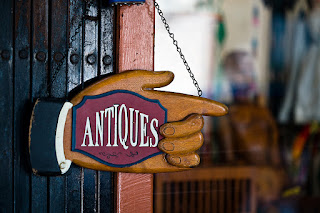Is It Antique, Vintage, Or Just Old Stuff?
What makes an item antique or vintage? What do those words
even mean? Lots of people, from collectors to resellers, throw those words
around to suit their needs. Use them often enough in the wrong way, and they
don’t mean much when it comes to describing an item.
Unfortunately, there isn’t any one solid definition of “antique”
or “vintage.” It’s a matter of opinion and depends upon who you ask.
Most people would say that an antique is an item at least
100 years old. That’s how I tend to use the word. So, if an item was
manufactured in 1917 or before, you’ve got yourself an antique. There are
exceptions to this, however. An item from the 1940s may be completely different
from what’s used today, to the point where most modern folks would hardly
recognize it — and it’s rare to find one in good condition. In my opinion, that
would be a genuine antique. Conversely, as time marches on, 100-year-old items
become more and more like modern items, and anything but rare. Are those
antiques, or just old stuff?
“Believe it or not, twice now I’ve been asked if I want to buy an antique microwave.” – Antique mall owner, quoted from a Facebook group
“Vintage” is controversial too. It’s way overused by
resellers, particularly on venues like eBay or Etsy. Although the word is
usually used on its own, more accurately it should be used alongside a year, a
decade, or a period. For example, “Vintage 1960s Boots” or “Vintage Mid Century
Cocktail Set.” Used thus, even something made last year could be vintage 2016.
Like a bottle of wine.
For our purposes, however, the word “vintage” is generally
understood as an item at least 20 years old, although that may be generous. I
won’t sell anything in my shop (at least I try not) unless it’s pre-1970. Maybe
I just don’t like applying the word “vintage” to anything that’s younger than I
am.
Simply applying labels by an item’s age isn’t quite enough,
though. Opinions vary, but mine is this: A true antique or vintage item is representative
of the period in which it was made and used. It could not be confused with an
item made later. It’s an object that represents a period aesthetic, a trend, or
the technological advancements of the era. It teaches us history, and helps us
understand how our ancestors lived day-to-day, as well as what they loved and
valued.




Comments
Post a Comment